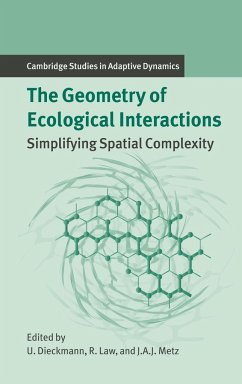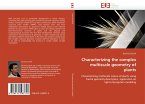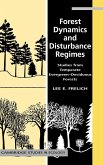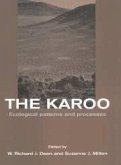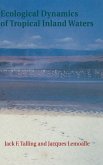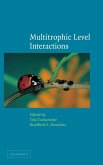The field of theoretical ecology has expanded dramatically in the last few years. This volume gives detailed coverage of the main developing areas in spatial ecological theory, and is written by world experts in the field. Integrating the perspective from field ecology with novel methods for simplifying spatial complexity, it offers a didactical treatment with a gradual increase in mathematical sophistication from beginning to end. In addition, the volume features introductions to those fundamental phenomena in spatial ecology where emerging spatial patterns influence ecological outcomes quantitatively. An appreciation of the consequences of this is required if ecological theory is to move on in the 21st century. Written for reseachers and graduate students in theoretical, evolutionary and spatial ecology, applied mathematics and spatial statistics, it will be seen as a ground breaking treatment of modern spatial ecological theory.
Table of contents:
1. Introduction Richard Law, Ulf Dieckmann and J. A. J. Metz; Part I. Empirical and Statistical Background: 2. A neighbourhood view of interactions among individual plants Peter Stoll and Jacob Weiner; 3. Spatial interactions among grassland plant populations Jonathan Silvertown and Bastow Wilson; 4. Spatio-temporal patterns in grassland communities Tomás Herben, Heinjo During and Richard Law; 5. Statistical modelling and analysis of spatial patterns David Cox, Valerie Isham and Paul Northrop; Part II. When the Mean-Field Approximation Breaks Down: 6. Grid-based models as tools for ecological research Christian Wissel; 7. Coexistence of replicators in prebiotic evolution Tamas Czárán and Eörs Szathmáry; 8. Games on grids Martin Nowak and Karl Sigmund; 9. The interplay between reaction and diffusion Mikael Cronhjort; 10. Spirals and spots: novel evolutionary phenomena through spatial self-structuring Maarten Boerlijst; 11. The role of space in reducing predator-prey cycles Vincent Jansen and André de Roos; Part III. Simplifying Spatial Complexity: Examples: 12. Spatial scales and low-dimensional deterministic dynamics Howard Wilson and Matthew Keeling; 13. Lattice models and pair-approximation in ecology Yoh Iwasa; 14. Moment approximations of individual-based models Richard Law and Ulf Dieckmann; 15. Evolutionary dynamics in spatial host-pathogen systems Matthew Keeling; 16. Foci, small and large: a specific class of biological invasion Jan-Carel Zadoks; 17. Wave patterns in spatial games and the evolution of cooperation Régis Ferriere and Rick Michod; Part IV. Simplifying Spatial Complexity: Techniques: 18. Pair approximations for lattice-based ecological models Kazunori Sato and Yoh Iwasa; 19. Pair approximations for different spatial geometries Minus van Baalen; 20. Moment methods for ecological processes in continuous space Benjamin Bolker, Steven Pacala and Simon Levin; 21. Relaxation projections and the method of moments Ulf Dieckmann; 22. Methods for reaction-diffusion models Vivian Hutson and Glen Vickers; 23. The dynamics of invasion waves Johan A. J. Metz, Denis Mollison and Frank van den Bosch; 24 Epilogue Johan A. J. Metz, Ulf Dieckmann and Richard Law; References; Index.
In this exciting new volume detailing the latest developments in spatial ecological theory, innovative methods of simplifying spatial complexity are put forward. This book is for all those interested in theoretical or evolutionary biology and applied mathematics.
Provides introduction to exciting new areas of spatial ecological theory, simplifying spatial complexity.
Hinweis: Dieser Artikel kann nur an eine deutsche Lieferadresse ausgeliefert werden.
Table of contents:
1. Introduction Richard Law, Ulf Dieckmann and J. A. J. Metz; Part I. Empirical and Statistical Background: 2. A neighbourhood view of interactions among individual plants Peter Stoll and Jacob Weiner; 3. Spatial interactions among grassland plant populations Jonathan Silvertown and Bastow Wilson; 4. Spatio-temporal patterns in grassland communities Tomás Herben, Heinjo During and Richard Law; 5. Statistical modelling and analysis of spatial patterns David Cox, Valerie Isham and Paul Northrop; Part II. When the Mean-Field Approximation Breaks Down: 6. Grid-based models as tools for ecological research Christian Wissel; 7. Coexistence of replicators in prebiotic evolution Tamas Czárán and Eörs Szathmáry; 8. Games on grids Martin Nowak and Karl Sigmund; 9. The interplay between reaction and diffusion Mikael Cronhjort; 10. Spirals and spots: novel evolutionary phenomena through spatial self-structuring Maarten Boerlijst; 11. The role of space in reducing predator-prey cycles Vincent Jansen and André de Roos; Part III. Simplifying Spatial Complexity: Examples: 12. Spatial scales and low-dimensional deterministic dynamics Howard Wilson and Matthew Keeling; 13. Lattice models and pair-approximation in ecology Yoh Iwasa; 14. Moment approximations of individual-based models Richard Law and Ulf Dieckmann; 15. Evolutionary dynamics in spatial host-pathogen systems Matthew Keeling; 16. Foci, small and large: a specific class of biological invasion Jan-Carel Zadoks; 17. Wave patterns in spatial games and the evolution of cooperation Régis Ferriere and Rick Michod; Part IV. Simplifying Spatial Complexity: Techniques: 18. Pair approximations for lattice-based ecological models Kazunori Sato and Yoh Iwasa; 19. Pair approximations for different spatial geometries Minus van Baalen; 20. Moment methods for ecological processes in continuous space Benjamin Bolker, Steven Pacala and Simon Levin; 21. Relaxation projections and the method of moments Ulf Dieckmann; 22. Methods for reaction-diffusion models Vivian Hutson and Glen Vickers; 23. The dynamics of invasion waves Johan A. J. Metz, Denis Mollison and Frank van den Bosch; 24 Epilogue Johan A. J. Metz, Ulf Dieckmann and Richard Law; References; Index.
In this exciting new volume detailing the latest developments in spatial ecological theory, innovative methods of simplifying spatial complexity are put forward. This book is for all those interested in theoretical or evolutionary biology and applied mathematics.
Provides introduction to exciting new areas of spatial ecological theory, simplifying spatial complexity.
Hinweis: Dieser Artikel kann nur an eine deutsche Lieferadresse ausgeliefert werden.

